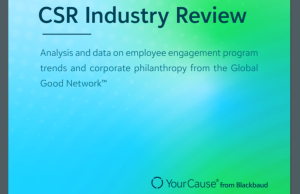Nonprofits talk a good diversity, equity and inclusion game, but their actions speak more softly. People of color or sexual orientations other than heteronormative continue to lag in their representation and advancement within nonprofits, according to a new study from the Building Movement Project. a leadership diversity organization based in New York City.
Among more than 5,000 paid workers at nonprofits surveyed, 49% of people of color indicated their color had either a slightly or very negative effect on their career, up from 35% who indicated their race was holding them back, according to Race to Lead Revisited: Obstacles and Opportunities in Addressing the Nonprofit Leadership Gap. The study is a follow-up to research done in 2016.
“We have become very facile about talking about an issue, but our words have not yet resulted in action,” said Frances Kunreuther, co-director of the Building Movement Project.
People of color in top-level roles, such as executive directors, CEOs or senior management slipped from 49% in 2016 to 48%, while representation among their white counterparts increased from 54% to 57%. At the same time, the desire to lead rose among people of color, with 52% indicating a strong desire for top leadership roles, compared to a slight decline among whites, from 40% to 37%.
Enthusiasm for management among people of color is matched by confidence in their ability to perform well. In 2016, 19% of respondents of color indicated their skills or interests were not well suited to executive director roles. By 2019, that figure had shrunk to five%. In contrast, three years ago 29% of white respondents said their skills and interests were not suited to executive director positions, a figure that dropped to 10% in 2019.
There was a strong disparity when respondents were asked to express why they were not interested in top roles in both 2016 and 2019. In 2016, 21% of people of color said they were pursuing opportunities outside the nonprofit sector, compared with 10% of white respondents indicating they were doing so. By 2019, 16% of people of color indicated they were looking for opportunities outside the nonprofit sector, compared with 8% of white respondents.
The gap between aspiration and realization seems to be in institutional support. In 2016, 43% of people of color said they had a mentor within their organization, compared with half of whites. By 2019, the percentage of respondents of color saying so had risen to 48% – but an even larger percentage of whites — 56% — said they had received internal mentoring.
Similarly, 38% of people of color reported receiving staff management or supervisory training in 2016, as did 43% in 2019. But once again, more whites indicated they had been given these opportunities — 41% in 2016, and 46% in 2019.
There has been some positive movement. In 2019, fewer people of color cited inadequate salaries, opportunities for advancement or lack of relationships with funding sources as on-the-job frustrations or barriers then had in 2016. But in both years, a third or more said being called on to represent a community, or being asked to push diversity, equity and inclusion efforts, was a source of frustration.
The result of all these frustrations may be an escalating talent drain. In 2016, 42% of people of color were less likely to want to work in white-dominant organizations. By 2019, that percentage had skyrocketed to 58%. Similarly, in 2016 just under two-thirds of people of color said organizations often rule out hiring candidates of color because of a lack of perceived “fit” with the organization. By 2019, that percentage had jumped to 77%. Additionally, in 2019 some 88% of people of color believed they needed more skills and training than their white peers to be considered for top positions.
“Race equity isn’t a problem you solve,” Kunreuther said. “Race equity is not a checklist. It is a change in culture and practices — who has power, who has say in organizations, how they operate. If you are not making those changes, it does not matter that you are saying all these things.











